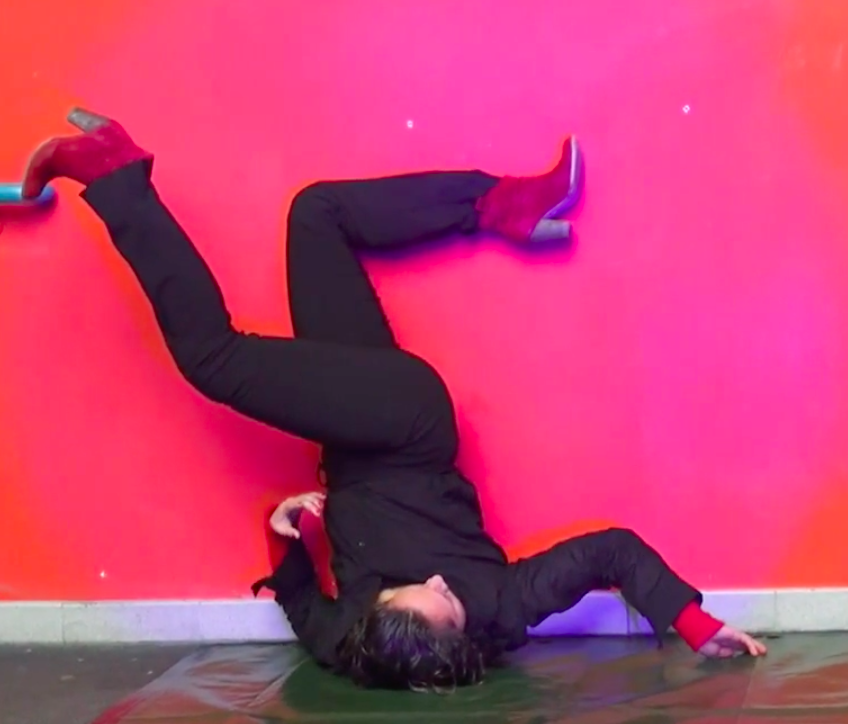2.4 Performance Art: liminal, strange and body experience
2.4.3 A body's performance

Instructions :
1) Before reading this page, please review the notes you've taken about the second point indicated in the introduction of the study ("The commitment of the performer's body during the live work and what it conveys for her and the audience.")
2) While reading this page, compare your notes with what is proposed here as an interpretation of these precise aspects.
Feel free to re-watch the video with the several bookmarks implemented according to the different durations mentioned in the analysis :
Performance art is also generally an opportunity to highlight what video or film cannot show in as much detail as in reality. The emphasis is placed on the work of the performers' bodies through a decomposition of the movement and the difficulty of the positions and movements to be achieved. Scheherazade Zambrano Orozco shows a perfect example of this in her performance Chutes, where she repeatedly composes a series of acrobatic postures that contort her body considerably: for example, when she balances upside down along the red wall (10min10s to 10min30s) or at the end of the performance when she performs a similar figure, but this time without any support, holding the pose for more than a minute (23min15s to 26min15s).

The movements, as well as the displacements, also seem particularly difficult to achieve, whether it be the falls which, even if choreographed (and therefore anticipated), are not simulated (14min34s), the jerky movements of a disarticulated doll (11min43s-12min06s) and the staggering (13min20s) or limping (16min11s) wanderings. The dancer's body is clearly put to the test, as can be seen in the video through the sweat beading on her forehead (24min27s) and the features of her face that pull repeatedly when she performs an acrobatic move (13min3s).
With the body as the main, or even almost sole, artistic medium (even if the space is partly scenographed), the performer must also draw attention to herself by other means than the physical performance (which could ultimately be summed up as a sporting performance). The care taken in how the spectator's attention is drawn to this body is particularly visible in the performance Chutes. It demonstrates that, although it can leave room for improvisation, Performance Art elaborates a sequence of actions that integrates the audience from the outset. At the beginning of the performance, the artist's positioning, motionless near the performance space when the others are moving around her, and her carefully studied red and black outfit serve to attract the attention of the people around her and encourage them to stop for a few moments to observe what is happening. Similarly, the sound she makes with her heels, which accelerates (0 to 3min15s), is reminiscent of the three blows struck in theatres to signal the start of the performance: the performer thus indicates that something poetic is about to happen. The permanent link between the choreography performed by the dancer and the electronic music proposed by the self-taught artist Hugo Fuzz Correa suggests a meticulous preparation of the performance. For example, the rhythm of the music accelerates when the dancer starts to activate the step and to penetrate further into the performance space; on other occasions, tones reproducing the notes produced by a piano follow her path on the stairs, and finally, the production of very low tones accompanies some of the dancer's falls and signifies to the audience the moment of the artist's final collapse.

